
Following an SEO copywriting checklist is quite important if you want to improve your website’s search engine visibility and outrank your competitors.
Writing and publishing content that appeals to both search engines and readers can be a bit of a challenge, but with the right SEO copywriting checklist, you can significantly improve your chances of achieving higher rankings.
This SEO copywriting checklist will guide you through all the things you need to check before publishing any blog post.
By using this SEO copywriting checklist, you'll ensure that your content is optimized for search engines and attracts more traffic. Let’s dive into the key points you need to focus on to start seeing results.
True to SEOptimer fashion, we also spoke to some leading SEOs and digital marketing experts on how they would optimize blog content for SEO. We'd like to thank the following people for their valuable insights and contributions:
- Boris Dzhingarov, CEO of ESBO, Bulgaria
- Caleb Riutta, co-founder of DUSK Digital, United States
- Jared Bauman, Co-Founder and CEO at 201 Creative, United States
- Parker Warren, Founder & CEO at PWA Media, United States
- Paul Kelly, Founder at SEO Agency For Startups, United Kingdom
- Jordanne Erichsen, Head of SEO at Outsmart Labs, United States
- Andrea Abbondanza, CEO and Founder at SEO For Restaurants, Australia
What is SEO Copywriting?
SEO copywriting is the process of creating content that answers a user’s search query while also ranking well in search engine results.
It involves strategically using targeted keywords and optimizing various on-page elements, such as headings, and internal links, to make content more appealing to search engines like Google.
The ultimate goal of SEO copywriting is to drive organic traffic to a website by aligning content with what users are searching for while maintaining readability and value. Essentially, it’s a blend of high-quality writing and smart SEO tactics to improve a website's ranking potential.
Why Use an SEO Copywriting Checklist?
There's no shortage of content online. According to a study done by Backlinko with the latest blogging statistics, there are about 7.5 million blog posts published every day.

Now that's quite a big number, so if you want to stand out from the crowd, you should really put effort into optimizing your SEO content for Google and other search engines.
For this reason, you should use an SEO copywriting checklist each time you write and publish a blog post.
Here are some additional reasons for using a copywriting checklist:
Improves Search Rankings
A checklist helps you cover all critical aspects of SEO, from keyword placement to meta tags, increasing your chances of ranking higher on search engine results pages (SERPs).
Ensures Consistency
Following a checklist ensures that every piece of content you create is consistently optimized, giving your site a better chance of attracting organic traffic over time.
Boosts User Engagement
An SEO copywriting checklist includes elements that not only appeal to search engines but also improve readability and engagement for users.
This can lead to lower bounce rates and higher conversion rates.
Saves Time and Reduces Errors
Instead of remembering every optimization step, a checklist serves as a guide, saving time and reducing the likelihood of missing important SEO elements.
Helps Adapt to SEO Changes
SEO is constantly evolving. A well-structured checklist helps you stay up-to-date with the latest best practices and ensures your content meets current SEO standards.
Now that you know about the importance of using an SEO copywriting checklist, let's have a look at the checklist that you can follow to improve your SEO content.
SEO Copywriting Checklist for Marketers
Is the Target Keyword in the Title of the Post?
The first item on this SEO copywriting checklist deals with the title of your post. You need to add the target keyword in the title of the post.
Adding the target keyword to the title of your post is one of the most important steps in SEO copywriting.
Search engines use a page's title tag when determining the relevance of a page to a user’s search query.
Now that's not to say you can just simply add the target keyword and rank because of that. But, it's a good start to optimizing your posts and content for SEO.
By including the target keyword in the title, you signal to search engines that your content is relevant to a particular keyword, which can improve your chances of ranking higher.
It’s also important to front load the title with your target keyword, meaning placing the target keyword as close to the start of the title as possible.
Some of our best ranking articles, have the target keyword at or very close to the start of the post title.
For instance, our article on SEO forecasting rank in the first position on Google for its target keyword.
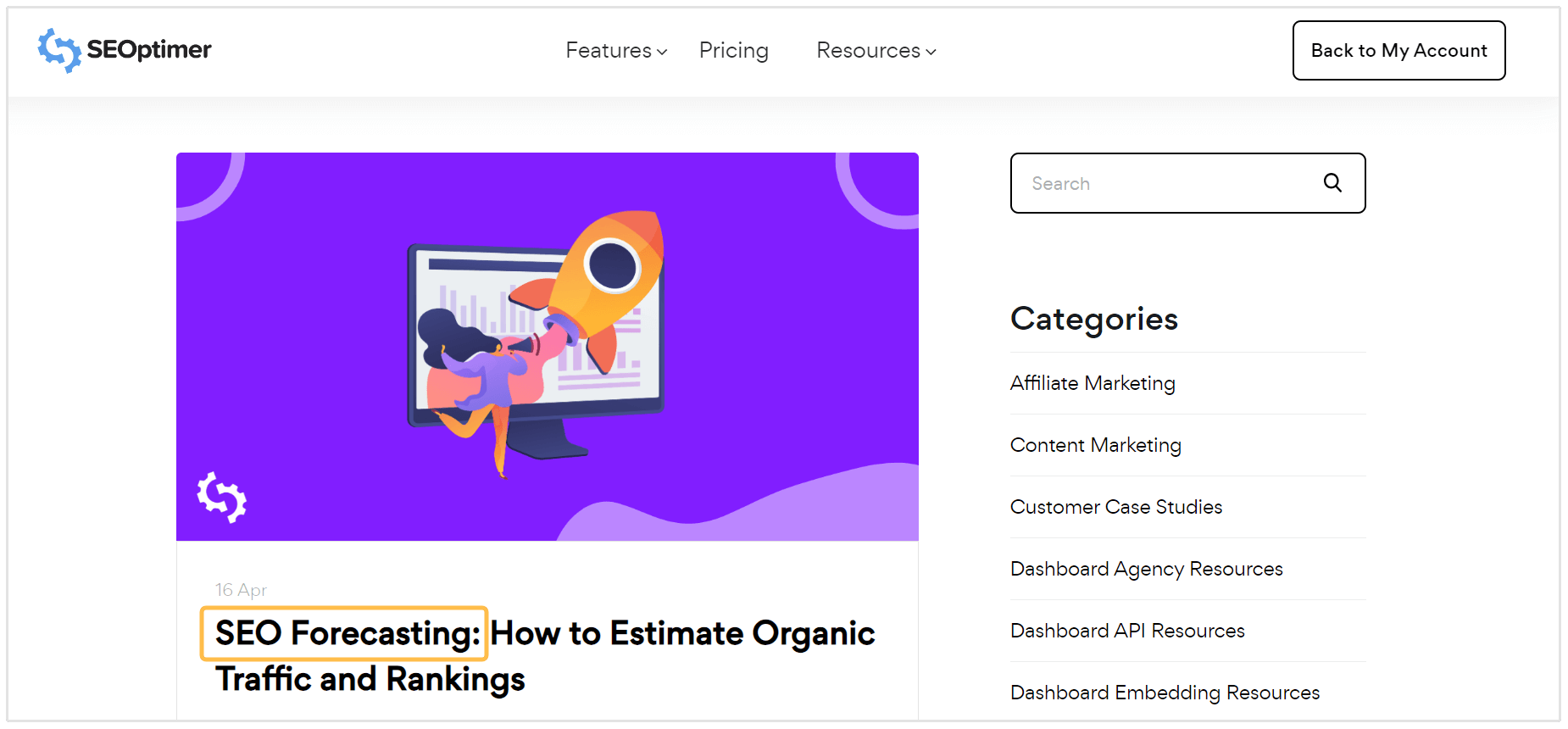
This helps search engines immediately understand what the content is about, and it can also grab the attention of users scanning search results.
You also need to think of how to make your title stand out from the comeptition. A good tactic is to add modifiers and numbers to your titles to make them more unique.
I like to think of it as the storefront sign of a shop. It's the first thing people notice as they walk by. If it's dull or generic, they'll keep moving without a second thought.
- Boris Dzhingarov, CEO of ESBO
Have You Added the Target Keyword in the First Sentence?
Adding the target keyword in the first sentence of your post is a useful SEO copywriting hack.
Search engines prioritize content where the main keyword appears early on, as it signals that the topic of the post is directly related to the search query. This not only helps search engines understand the relevance of your content but also reassures readers that they’ve landed on a page that will address their needs.
By placing the keyword in the first sentence, you set a strong foundation for both SEO and user experience.
For example, check the screenshot below of how we added the target keyword for our post on how to rank in a competitive niche. Notice how naturally we used it without being spammy or making it difficult to read?
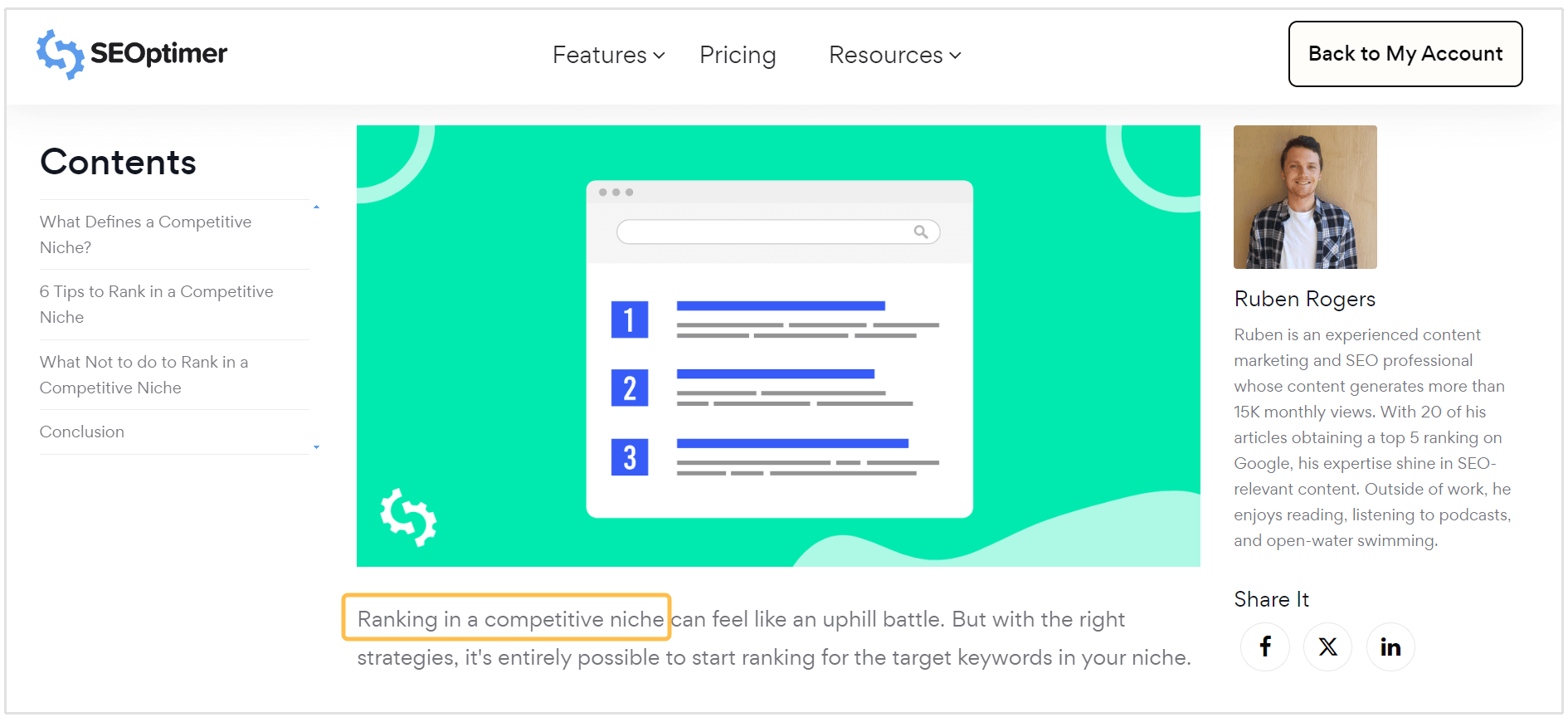
The result? This blog post is ranking in the first spot for it's target keyword. Again, it's not simply just because the used the target keyword in the first sentence.
Instead, it's a combination of all the things we're discussing in this post.
By adding the target keyword in the first sentence you can grab the reader’s attention quickly and reinforce the topic of the post right from the start, increasing engagement and improving the likelihood that the content will rank well.
Have You Addressed the User's Search Intent?
Addressing the user’s search intent is essential for ranking in Google because search engines aim to deliver the most relevant and helpful content based on what the user is searching for.
If your content doesn’t match the intent behind a search query, it’s unlikely to rank, no matter how well-optimized it is.
You can have the perfect keyword, but if your content doesn’t match the user’s intent, it won’t work.
- Caleb Riutta, co-founder of DUSK Digital
Search intent refers to the reason behind a search—whether the user is looking for information, wanting to make a purchase, or seeking a specific website.
There are four main types of search intent:
- Informational: The user is looking for answers or knowledge. For example, they might search for "how to write SEO copy."
- Navigational: The user wants to find a specific website or page, such as "Facebook login" or "Google Analytics dashboard."
- Transactional: The user is ready to make a purchase or take an action, such as searching for "buy SEO software" or "sign up for online marketing courses."
- Commercial: The user is comparing products or looking for reviews before making a decision, like "best SEO tools" or "SEO software reviews."
To check if you’ve met the search intent, examine the top-ranking pages for your target keyword and identify the kind of content they offer.
Are they answering a question, selling a product, or providing a comparison?
Make sure your content aligns with this intent.
If users are looking for quick answers, give them clear and direct information. If they're looking for an in-depth guide or product recommendation, ensure your content offers comprehensive insights.
Have You Added External Links to Credible Sources?
Believe it not, but you should actually link to external websites.
Adding external links to credible sources is an important part of SEO copywriting. These links help build trust with both your readers and search engines by showing that you’ve based your content on well-researched, authoritative information.
When you link to high-quality, relevant sources, it improves your content's credibility and signals to search engines that your post is part of a broader, trustworthy network of information.
Additionally, external links enhance the reader’s experience by providing them with further resources and insights, which can help them dive deeper into a topic.
Google also values content that connects to reputable websites, as this can help establish your page as a valuable resource within your niche. Just ensure that the sources you’re linking to are relevant and authoritative.
Have You Added Internal Links?
Internal links play a big role in SEO by connecting different pages on your website.
They help search engines understand the structure of your site and establish a hierarchy of content, which improves crawlability and indexing.
By linking to other relevant pages within your website, you can guide both search engines and readers to more of your valuable content, boosting the visibility of important pages.
Internal links also improve user experience by encouraging visitors to explore more of your site, reducing bounce rates, and increasing time spent on your website.
Internal links are crucial for spreading link equity throughout your website and guiding users to related content.
- Jared Bauman, Co-Founder and CEO at 201 Creative
So how many internal links should you add per post?
Well, there's no real data to support the right quantity. But from what we've found, you should aim for about 2 to 5 internal links per 1,000 words.
So if you've got a post of 2,000 words, you should have a minimum of 4 and a maximum of 10 internal links.
Is the Text Easy to Read?
You should make it as easy as possible for users to read and consume your content.
If your text is clear and simple, users are more likely to stay on your page longer, reducing bounce rates and improving your rankings.
On the other hand, if your content is too complicated or hard to follow, visitors may quickly leave, signaling to search engines that your content isn't relevant or helpful.
You need to target a readability score of 60-70 on the Flesch-Kincaid scale.
- Parker Warren, Founder & CEO at PWA Media
To ensure your text is easy to read, follow these tips:
- Use Short Sentences and Paragraphs: Break up your content into bite-sized chunks to avoid overwhelming readers.
- Avoid Complex Vocabulary: Use simple, everyday language that your audience will easily understand.
- Incorporate Subheadings: Organize your content with clear subheadings to guide readers through your post.
- Use Bullet Points and Lists: These elements make information more digestible and visually appealing.
- Choose a Readable Font Size and Style: Ensure that the text is easy on the eyes by using an appropriate font size and style that works across devices.
To check your content's readability, you can use a free tool like Hemingway App. It analyzes the readability of your text and gives you a score accordingly.
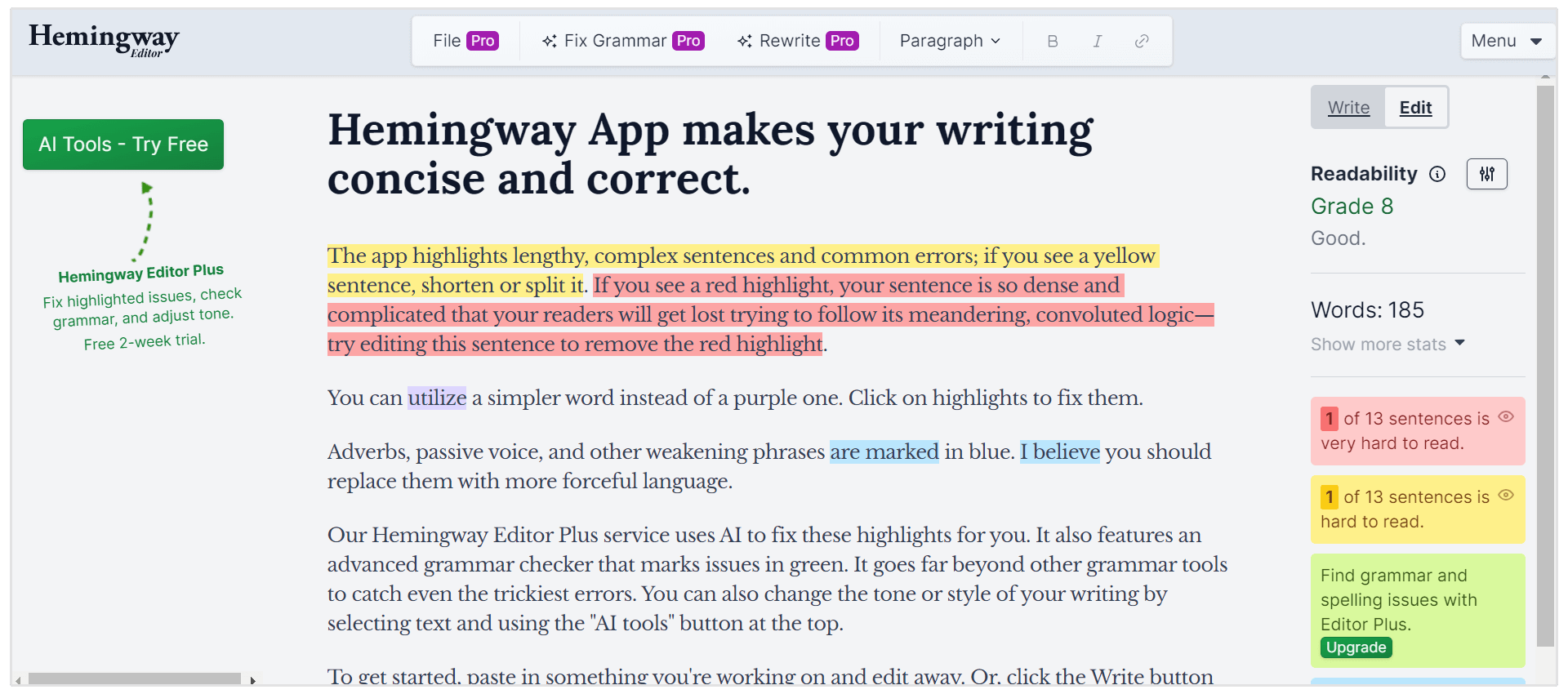
Create an SEO-Friendly Slug
The URL, or slug, of your page is another important factor in SEO.
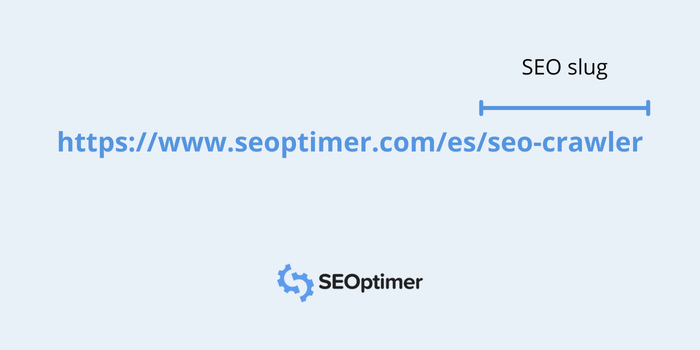
A well-optimized slug helps both search engines and users understand the content of the page before even clicking on it.
Search engines look at the slug to determine how relevant the page is to a search query, so having an SEO-friendly slug can improve your chances of ranking higher.
To create an optimized slug, keep it:
- Short and Descriptive: Aim for a concise slug that clearly reflects the content of the post. Long, complex URLs can be confusing for users and may get cut off in search results.
- Include the Target Keyword: Be sure to include your main keyword in the slug to make it clear what the page is about and improve its relevance for SEO.
- Use Hyphens, Not Underscores: Separate words with hyphens (e.g., "seo-copywriting-checklist") as Google prefers this over underscores.
- Avoid Stop Words: Omit unnecessary words like "and," "the," or "of" to keep the slug clean and straightforward.
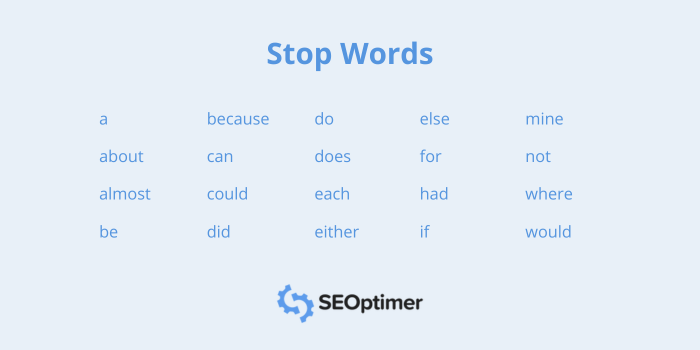
A clean, keyword-rich slug not only makes your URL more SEO-friendly but also improves user experience by making the content easier to find and share.
Have You Used Heading Tags?
Heading tags (H1, H2, H3, etc.) help structure your content, making it easier for search engines to understand the main topics of your post and allowing readers to easily scan through the content.
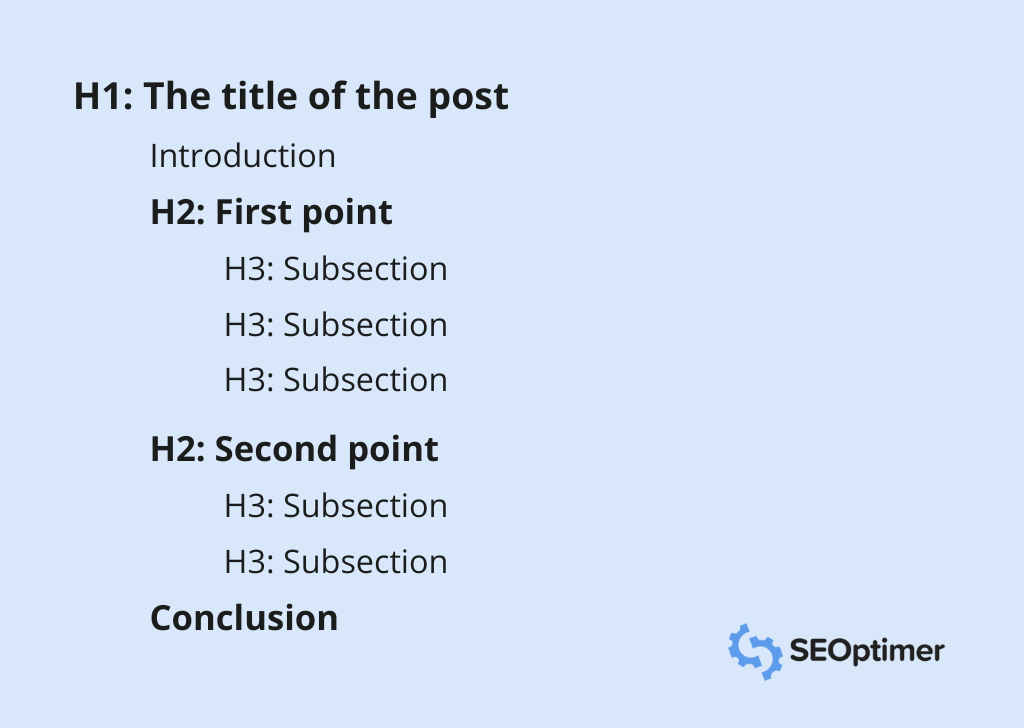
Properly using heading tags improves readability, organizes your ideas, and enhances your chances of ranking for relevant keywords.
Hierarchy of Heading Tags:
- H1: The H1 tag is reserved for the main title of your page. It tells search engines and users what the entire page is about.
- H2: These are used for the primary subheadings that introduce key sections of your content. Think of H2 tags as the main topics or categories within the post.
- H3: These are for sub-points under your H2 sections. They provide further structure and detail to the content within each section.
- H4 and Beyond: You can continue using H4, H5, and H6 tags to break down content into more specific sub-sections, though most content typically stops at H3.
Here are some guidelines for using heading tags effectively:
- Use One H1 Tag: Ensure your H1 is unique and accurately describes the main focus of the page.
- Maintain a Logical Order: Follow the hierarchy from H1 to H6 without skipping levels unnecessarily. This order reinforces the organization of your content.
- Incorporate Relevant Keywords: Use keywords naturally within your headings to signal to search engines what your content is about, aiding in SEO.
- Create Clear and Descriptive Headings: Ensure that each heading is descriptive and informative, helping users quickly understand the content of each section.
Have You Added SEO-Optimized Images?
Images play an important role in making your content more engaging and visually appealing, which enhances user experience and keeps readers on your page longer.
But beyond just adding visual interest, images can also contribute to your SEO efforts—if optimized correctly.
When you add well-optimized images, it not only helps your content rank higher but also increases the chances of your images appearing in Google Image search results, bringing in more traffic.
Here’s how to optimize your images for SEO:
- Use Descriptive File Names: Before uploading an image, give it a file name that describes the content of the image and includes relevant keywords (e.g., "seo-copywriting-checklist.png"). This helps search engines understand the image’s relevance.
- Add Alt Text: Alt text (alternative text) describes an image for both search engines and visually impaired users. Be sure to add clear, concise alt text that includes relevant keywords, as this helps with accessibility and image SEO.
- Compress Image Files: Large images can slow down your page load time, which negatively affects SEO. Use image compression tools to reduce file sizes without losing quality, ensuring your page loads quickly.
- Choose Relevant Images: Make sure the images you use are relevant to the content and enhance the topic you’re discussing. Avoid using generic or unrelated images, as they can confuse both users and search engines.
- Use Captions: Captions can be a great way to provide additional context for your images and may also help with keyword relevance if used naturally.
Is the Post Optimized for Featured Snippets?
Featured snippets are a prime spot in Google’s search results, often appearing at the top of the page, giving your content a major visibility boost.
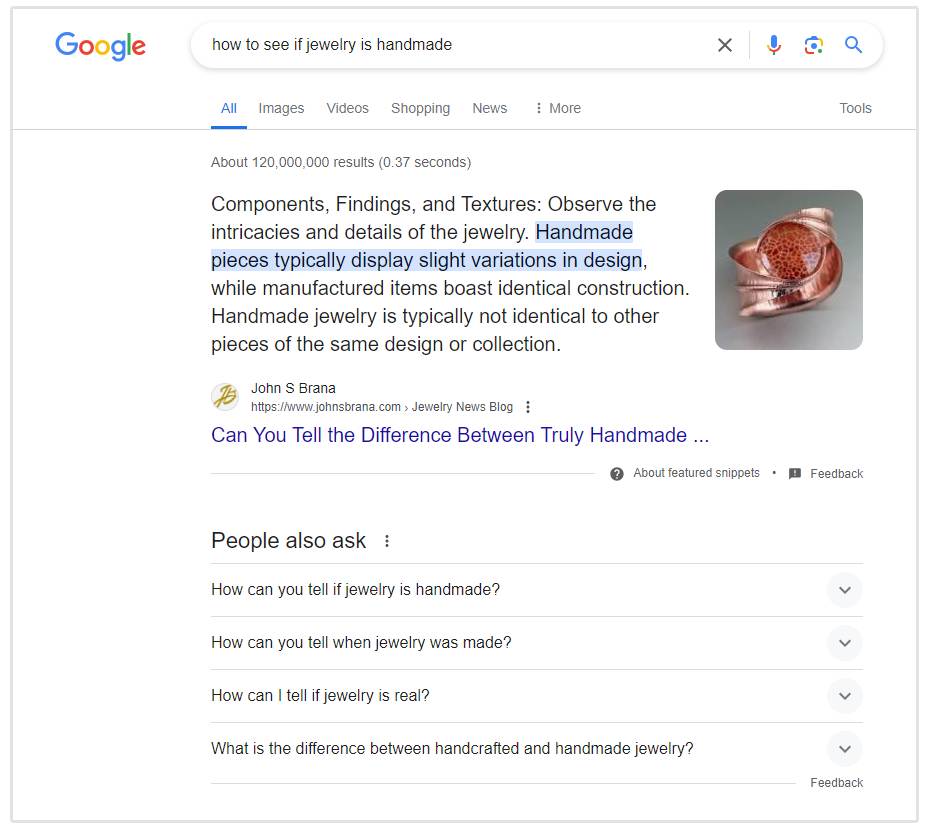
Optimizing your content for featured snippets can help you leapfrog over competitors, even if they rank higher in the traditional search results.
Crafting content that directly answers frequently asked questions in concise, clear sections can increase the likelihood of appearing in featured snippets, significantly boosting visibility.
- Paul Kelly, Founder at SEO Agency For Startups
So, how can you tailor your content to snag a featured snippet?
Here are some key strategies to optimize your post for featured snippets:
- Answer the Question Clearly and Concisely: Google often pulls content for featured snippets from posts that answer a search query in a straightforward, concise manner. Ensure your content provides a direct answer to the question in 40-60 words, especially for "what" or "how-to" queries.
- Use Lists, Tables, and Step-by-Step Instructions: Featured snippets frequently display listicles, tables, or step-by-step guides. If your post is a how-to or comparison, consider formatting the content in numbered or bulleted lists to increase the chances of it being featured.
- Optimize for Question-Based Keywords: People often search in the form of questions (e.g., “What is SEO copywriting?”). Include question-based keywords and create sections that directly answer these questions, ideally with the question itself as the heading.
- Create a "Snippet-Friendly" Paragraph Early On: Include a well-crafted, brief paragraph near the beginning of your post that succinctly answers the main question your post is addressing. Google tends to pull from the early part of content for featured snippets.
- Use Structured Data: Structured data, like schema markup, can help Google better understand your content and boost your chances of appearing in featured snippets. While this doesn’t guarantee a snippet, it improves your site’s overall SEO and visibility.
- Provide Value and Depth: Though snippets are concise, your post should still provide in-depth, valuable information to support the short answer. Google prefers content that answers the query fully while offering additional context.
Have You Added Secondary Keywords to the Post?
Secondary keywords, also known as related or supporting keywords, are additional phrases that complement your primary keyword.
While your main keyword is the central focus of your content, secondary keywords help capture related searches and provide further context to search engines about the topic you're covering.
By using secondary keywords, you broaden the reach of your post, making it more likely to rank for various search queries.
Take notes on the secondary keywords your competitors are using and any patterns you see.
- Jordanne Erichsen, Head of SEO at Outsmart Labs
Bonus tip: if you need some help finding secondary keywords for your blog post, check out our Keyword Research tool. It suggest alternative keywords based on the seed phrase/keyword you add.
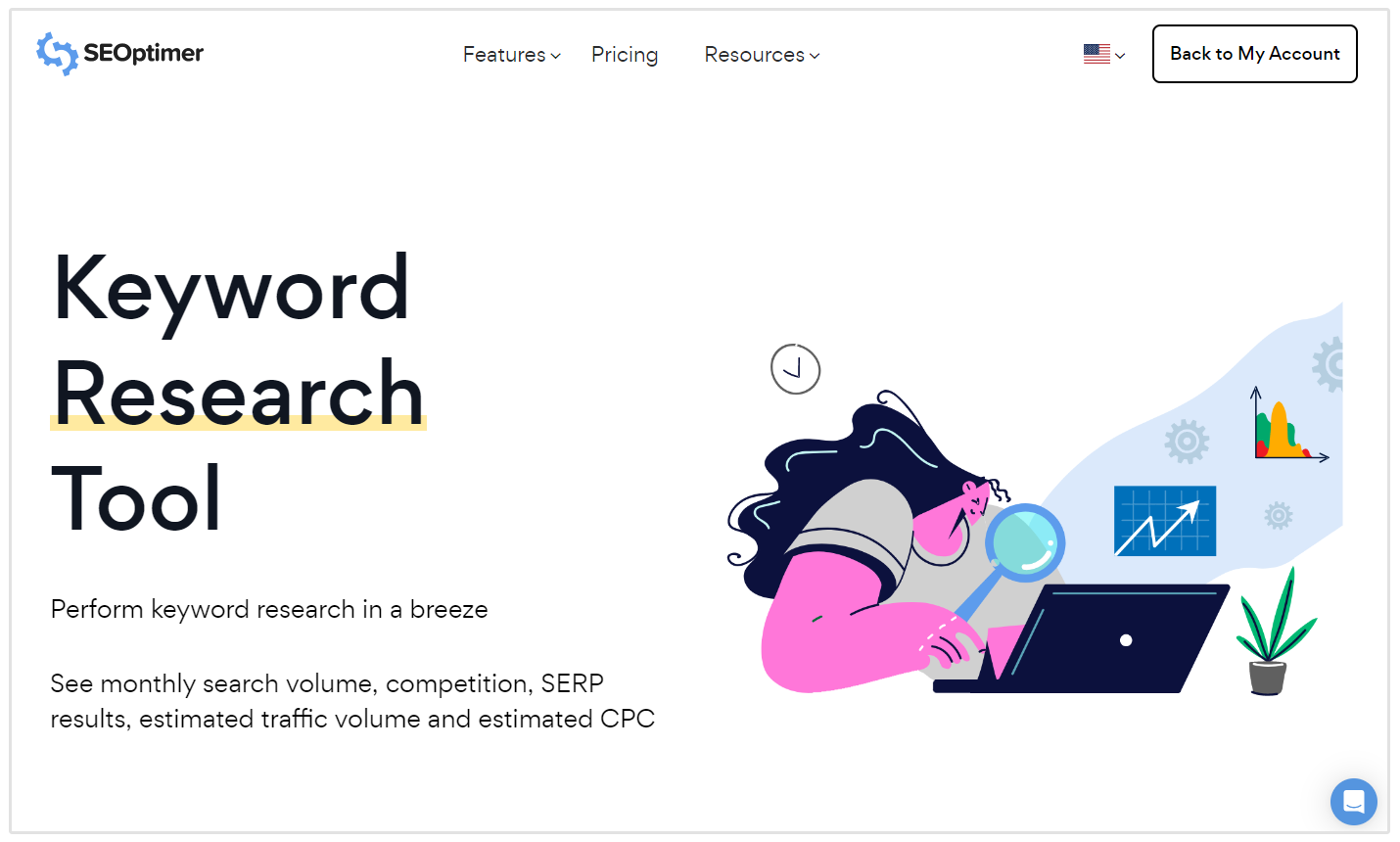
Have You Optimized the Meta Description for SEO?
While it doesn’t directly impact your rankings, a well-written meta description can improve your click-through rate (CTR).
The more appealing and relevant your description, the more likely users will click on your result, which can indirectly boost your rankings over time.
You should make sure to include your primary keyword naturally in the meta description to show both search engines and users that your content is relevant to their query.
It's worthwhile to ensure the content has a user-friendly meta description. It should be concise, inviting, and most importantly - it should include the targeted keyword.
- Andrea Abbondanza, CEO and Founder at SEO For Restaurants
SEO Copywriting Checklist FAQs
What is SEO copywriting, and how is it different from regular copywriting?
SEO copywriting is the process of writing content that is both engaging for readers and optimized for search engines.
It involves using keywords, optimizing for search intent, and following SEO best practices to improve rankings.
Unlike regular copywriting, which focuses solely on persuasion or storytelling, SEO copywriting also ensures that the content is discoverable by search engines, making it more likely to drive organic traffic.
How many keywords should I use in a single blog post?
You should focus on one primary keyword and a few related secondary keywords.
The primary keyword should be used naturally throughout the post, including in the title, first sentence, and headings. Secondary keywords can be sprinkled throughout to help cover related topics, but avoid keyword stuffing—prioritize quality and readability over keyword density.
If you want more information, we wrote a detailed post on how many SEO keywords you should target per page.
What is the ideal length for SEO-friendly content?
The ideal length for SEO-friendly content typically ranges from 1,500 to 2,500 words. And according to a blog post by Backlinko, they found that the average length of the top 10 results in Google was 1,447 words.
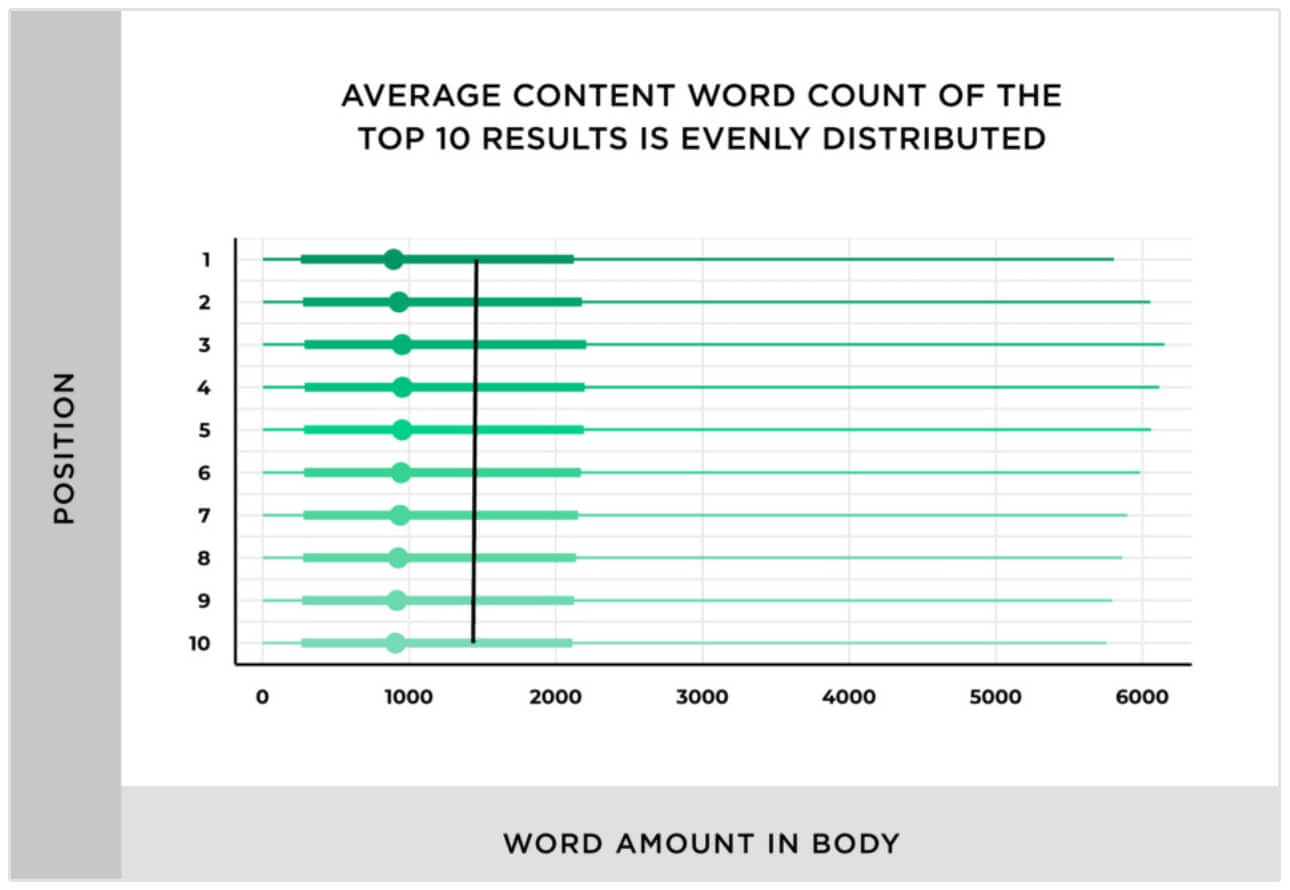
However, the length depends on the topic, search intent, and competition.
Longer posts tend to rank better because they provide more in-depth information, but it’s important to focus on quality and fully answering the reader’s query rather than just aiming for a specific word count.
Conclusion
By following this SEO copywriting checklist, you’ll be well on your way to publishing content that ranks higher in search results.
And with the ever-increasing competition online, you need to put your best foot forward with every blog post you publish.
Let us know what you think of these strategies and tactics by Tweeting to us @seoptimer.

















